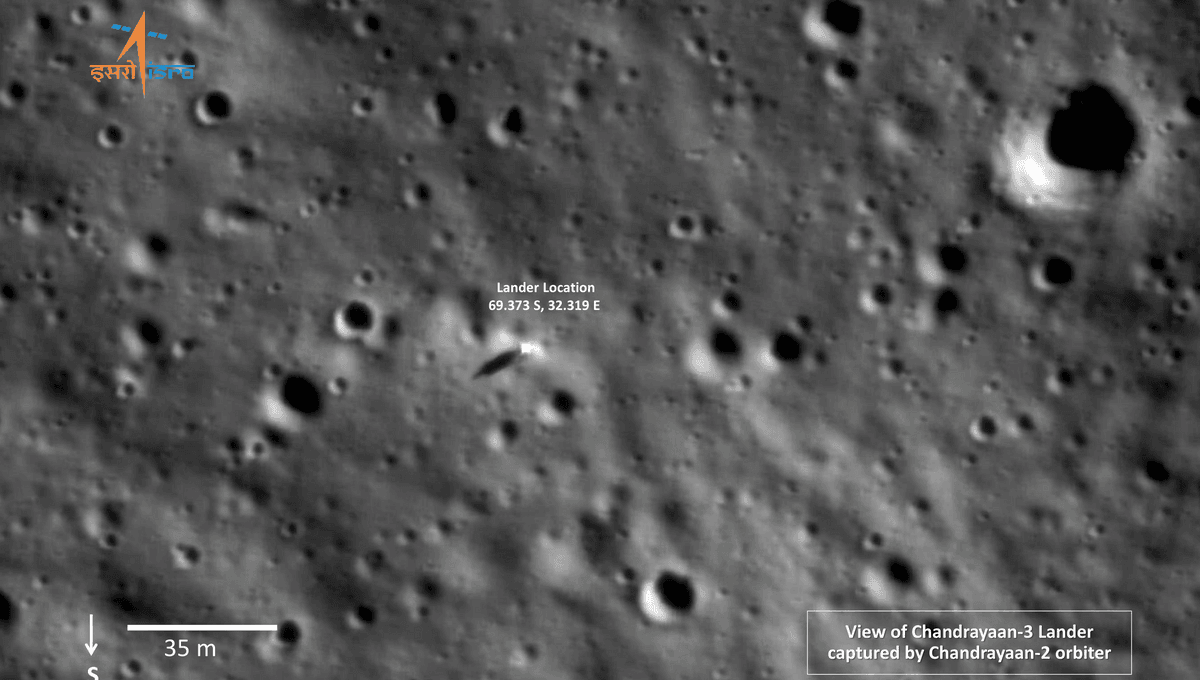
In September, India became the fourth nation to successfully land on the surface of the Moon and reached the southernmost location yet. The Vikram lander and the Pragyan rover worked for a whole lunar day, providing some fantastic insights into the composition of the Moon, but something interesting was spotted from far above them too.
The intrepid duo flew to the Moon attached to the Chandrayaan-3 orbiter, but it was its predecessor that studied the lander from orbit and allowed researchers to learn a lot about the ejecta halo of Vikram. As the lander flew down to the surface for a soft landing, its retrorocket lifted the top layer of the soil – in technical terms, the epiregolith – creating a bright halo around Vikram.
The landing is estimated to have lifted about 2.06 metric tons (4,500 pounds) of lunar regolith, spreading it across an irregular area of 108.4 square meters (1,167 square feet). The team used before and after images from Chandrayaan-2, doing a pixel-by-pixel analysis of how the area changed. The lander, its shadow, and a large halo can be easily recognized and separated in this way.
“Given the fine-grained nature of the lunar epiregolith at the Vikram landing site, a large volume of in situ epiregolith has been displaced from the landing site region. Therefore, the loss of cohesion of the epiregolith and consequent exposure of subsurface regolith may have resulted in increased photometric scattering and thus, the reflectance anomaly around the lander,” the authors wrote in the paper detailing the halo.
The work is not merely for curiosity. Landing on the lunar surface lifts a thin, weathered layer of tiny but sharp rocks. It was seen during the Apollo missions – so much so that Buzz Aldrin made a comment that they were “picking up some dust”, just before NASA’s Lunar lander Eagle touched down.
The observations from Vikram are consistent with what has been seen during the Apollo missions, although the much larger Lunar Excursion Module lifted three times as much epiregolith. The lunar regolith can be dangerous, attaching itself to instruments and equipment, with a risk of damaging them. It is dangerous for humans too – scientist Harrison H. Schmitt, part of Apollo 17, was discovered to be allergic to Moon dust.
The halo created by Vikram was also altered a second time, as the lander performed its hop experiment, moving just 40 centimeters (15.7 inches) from its original landing site. The current study focuses on what happened before that experiment.
The study is published in the Journal of the Indian Society of Remote Sensing.
[H/T: Space.com]
Source Link: Indian Lander Created Vast Ejecta Halo On The Moon